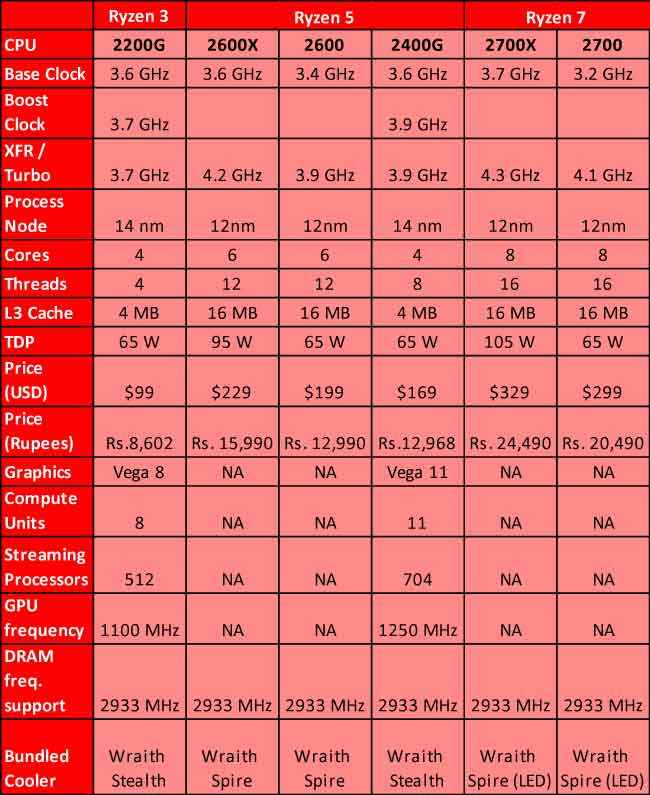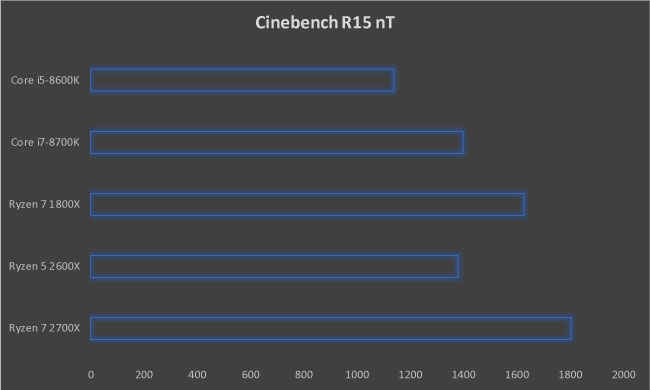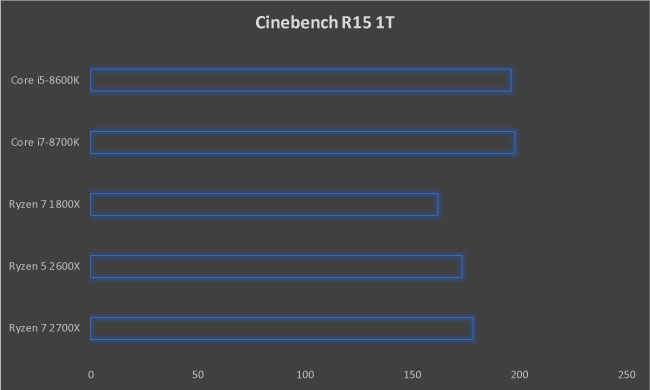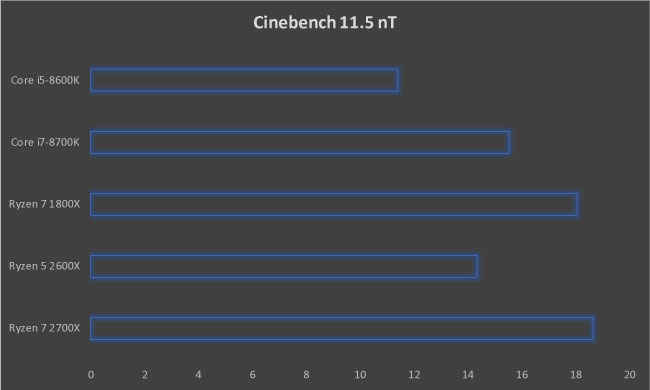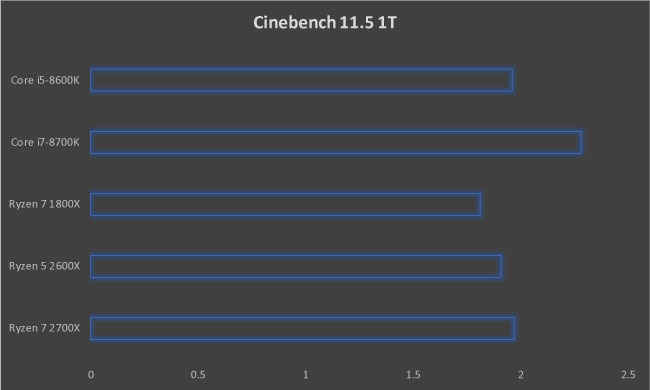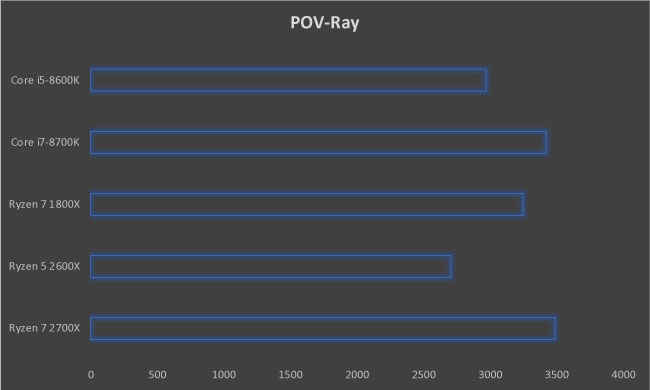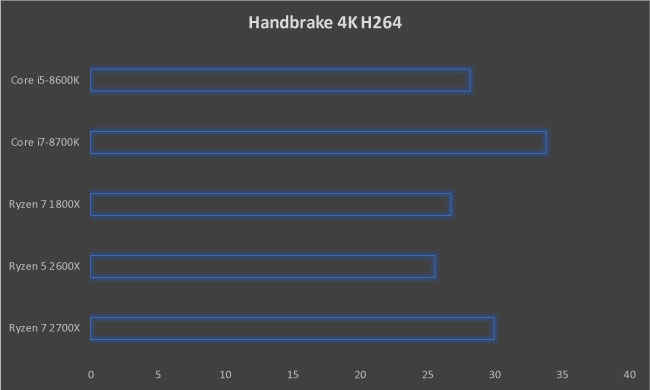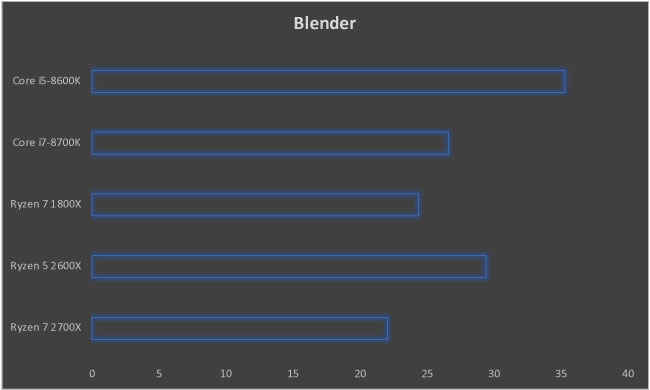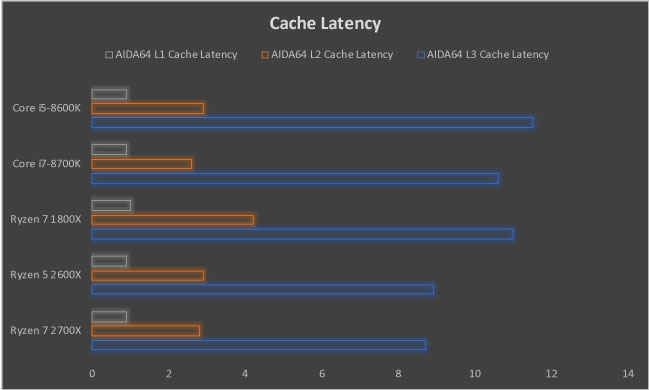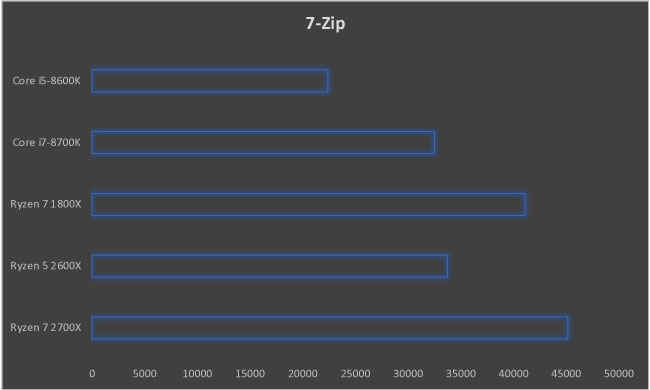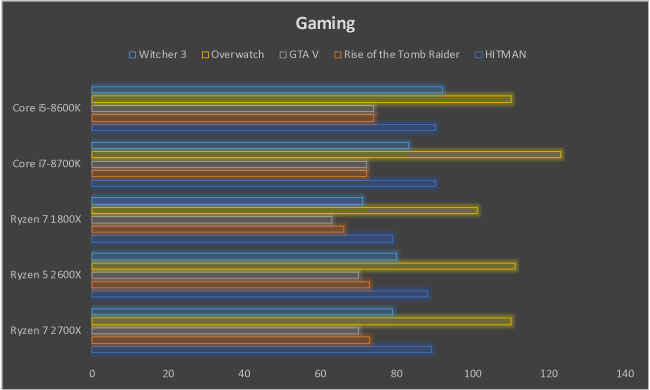AMD Ryzen 5 2600 Review : Mid-range madness
AMD’s second coming with the Ryzen family has certainly got Intel’s feathers ruffled. So much that we’ve started seeing a successor coming in from Team Blue with 8-cores and 16-threads. The Ryzen 5 2600 is a good competitor in the mid-range segment given its pricing and performance gain over the previous generation. Its closest competitor, the Core i5-8500 is at a disadvantage because it lacks multi-threading. This makes it a no-brainer to get the Ryzen 5 2600, especially given that AMD has improved upon its gaming performance. Intel and AMD are both matched in terms of config prices now that Intel has launched the budget-friendly H370 boards. So if you look at performance, pricing or feature set, we’re looking at Intel being on the back foot except in one domain – the IGP. AMD does have the 2400G to make up for that but then it loses out on compute performance. So if you’re going to be buying a graphics card, then the Ryzen 5 2600 becomes your go-to CPU but if you’re short on budget or wish to postpone your graphics card purchase then the Intel i5-8500 becomes the obvious choice.
AMD RYZEN 7 2nd Gen CPU Lineup and Specifications
With today’s release, the overall lineup has grown to six SKUs with two of them being Ryzen APUs that were launched earlier this year and were powered by Vega compute units for the graphics processing. There is more disparity between the clock speeds of the SKUs than the previous release. If you look at the Ryzen 7 series, then there are two SKUs, the Ryzen 7 2700X and the Ryzen 7 2700. The former having a base clock of 3.7 GHz and the latter having a base clock of 3.2 GHz. That’s a 500 MHz difference for $30 as compared to the 1800X and the 1700X which differed by 200 MHz for $100. Another key difference between neighbouring SKUs is the TDP which in case of the Ryzen 7 CPUs is 40 W. That says a lot about the thermal headroom for the 2700X.
As for the Ryzen 5 2600X and 2600, they’re pretty close in terms of specs and it’s quite logical since the Ryzen 3 and Ryzen 5 SKUs are positioned in a very price-competitive segment. Overall, if you look at the new SKU stack, AMD has come out with far fewer CPUs as compared to the first generation but with better disparity between them. In a way, this would help reduce the pricing across the SKU stack and that’s what they have done.
The first gen Ryzen flagship i.e. the Ryzen 7 1800X had a launch price of $499 which was quite a lot but justified given the massive core count. Now that Intel has upped the core count on their CPUs, it’s more reasonable to price the Ryzen 7 2700X at the same price as the Intel Core i7-8700K. However, this being India, no retailer is going to stick to the suggested pricing and as a result we see the Ryzen 7 2700X selling for Rs. 29,488 which makes it expensive compared to the Intel Core i7-8700K.
What’s new with AMD Ryzen 2nd Gen CPUs – 12nm, X470 and Zen+
The first thing that stands out with the new lineup is that they’re built on the new 12nm process node from Global Foundries which they’re calling 12LP (Leading Performance). Aside from the new manufacturing process, AMD has also improved the CPU architecture for a more efficient and performant design and they are calling it “Zen+”. Primarily, they’ve improved the latency of the different cache memory levels which should go a long way towards improving performance in day-to-day productivity tasks and cache intensive tasks which play around with large data sets.
Zen+
The overall improvement achieved with the new Zen+ is as follows:
L1 cache latency reduced by approximately 13%
L2 cache latency reduced by approximately 34%
L3 cache latency reduced by approximately 16%
DRAM latency reduced by approximately 11%
Single threaded IPC (Instructions Per Clock) improvement of approximately 3%
Support for DDR4-2933 (up from 2667)
12nm
The improvement brought about by the new 12nm process is as follows:
10% better transistor performance
+300 MHz clock speed
50 mV reduction of core voltage
All-core overclocks in the vicinity of 4.2 GHz
The latency reduction and IPC improvement also help with one of the key domains where the first generation of Ryzen CPUs didn’t perform at par with Intel CPUs, gaming. Yes, AMD says that they’ve upped the ante this time with gaming performance and we’ll see that in action below.
X470 chipset
Yes, AMD did mention that they aren’t going to change the socket and they haven’t done so. However, given the improvements in the design as compared to the first-gen Ryzen CPUs, a newer chipset is warranted to make proper use of the new CPUs. You can still plug these CPUs in the older X370 motherboards without worry, however, you are going to miss out on these things:
Optimised for the power requirements of the new Ryzen 2nd Gen CPUs
Reduced TDP for the physical chipset
Support for AMD StoreMI
One of these, is a new feature, i.e. the AMD StoreMI. It’s basically a software that AMD is shipping with all new X470 motherboards which allow users to combine different storage medium into one single virtual disk. So effectively, you can combine an SSD and an HDD together. And in doing so, you can move the frequently used data onto the faster storage medium. The fact that AMD is shipping a paid software for free is the good part, the great part is that it works with practically everything under the sun. You can combine any two devices, and that can be a SATA SSD, HDD, NVMe SSD, HDD, 3D XPoint SSD and even 2 GB of RAM. AMD states that their internal tests have shown an SSD+HDD under StoreMI to be of the same performance as just the SSD in itself. StoreMI throws up so many questions that we’re going to be bringing out an entirely different article on it in the coming days.
Wraith Spire LED Cooler
When the Ryzen 7 1800X came out, it didn't ship with a cooler since it was a $500 CPU and it was expected that anyone opting for such an expensive CPU would invest in an aftermarket cooler. For most of the other SKUs, AMD shipped the Wraith coolers. This time around, AMD is including the Wraith Prism CPU cooler along with the Ryzen 7 2700X at no extra cost. Moreover, this thing has 3 controllable RGB zones and works well with most motherboard manufacturer's RGB lighting solutions.
For those wondering about the acoustic performance, the cooler is very silent. With an open test bench, the fan barely registered a 2.5 dB delta.
AMD RYZEN 7 2700X Performance
The AMD Ryzen 7 2700X has quite a few improvements over the previous generation and AMD sent us not one but two motherboards to push the new CPU to its limits. We tested the unit on the following configuration:
AMD RYZEN TEST RIG
CPU: AMD Ryzen 7 2700X
Motherboard: GIGABYTE X470 AORUS GAMING 7 WIFI / ASRock Taichi Ultimate / ASUS ROG STRIX X470-F Gaming
SSD: Samsung 860 EVO 250 GB
HDD: Seagate FireCuda 2 TB ST2000DX002
RAM: G.Skill SniperX F4-3400C16D-16GSXW
Cooler: Corsair H115i Pro / AMD Wraith Spire (LED)
PSU: Corsair HX1050
Cinebench
We begin with Cinebench and it's quite evident that the AMD Ryzen 7 2700X ploughs through in the multi-threaded run whereas it still lags behind the Intel Core i7-8700K in the single-threaded run. The same can be seen in Cinebench 11.5 as well. Compared to the first gen Ryzen 7 1800X, it's a significant improvement and has come quite close to the 8700K but never crossed that of the 8700K in our benchmarks.
POV-Ray
POV-Ray being a multi-threaded benchmark sees the Ryzen 7 2700X excel but it comes very close to the Intel Core i7-8700K. In our tests, the lead was just 2%.
Handbrake
Our Handbrake run basically consists of transcoding a 4K video clip from one CODEC to another without changing the resolution. Handbrake is quick to incorporate new CPU encoding engines and has the Intel CPU leading the group. The 2700X comes in as a close second.
Blender
Blender is a fairly well known open-source rendering software. In this benchmark, we're looking at the time taken for a run to finish rendering. So the lower the score in this test, better the CPU.
PCMark 10
We've stopped using PCMark 8 for our CPU tests with the advent of the newer PCMark 10 benchmark. These are not the default runs, we turn off OpenCL to ensure that the IGP/GPU doesn't affect the benchmark run.
Cache Latency
In AIDA64's cache tests we can see the claimed improvement in cache latency in the 2700X.
7-Zip
In the compression and decompression benchmark within 7-Zip, the Ryzen 7 2700X can be seen with a significant lead. It appears that 7-Zip is more core-conscious as compared to the older WinRAR benchmark.
Gaming
And now for the part where the first gen Ryzen fell short of the Intel Kabylake CPUs. With the Ryzen 7 2700X, AMD has managed to close the gap considerably. Most games still perform better on the Coffee Lake quad-core Intel Core i5-8600K. Yes, the 8600K does better than the more superior 8700K in some of the older titles. The Ryzen 7 2700X seems to be very much at par with the 8700K, sometimes it's behind by just less than 5 FPS.
Verdict
AMD’s second coming with the Ryzen family has certainly got Intel’s feathers ruffled. So much that we’ve started seeing a successor coming in from Team Blue with 8-cores and 16-threads. The Ryzen 5 2600 is a good competitor in the mid-range segment given its pricing and performance gain over the previous generation. Its closest competitor, the Core i5-8500 is at a disadvantage because it lacks multi-threading. This makes it a no-brainer to get the Ryzen 5 2600, especially given that AMD has improved upon its gaming performance. Intel and AMD are both matched in terms of config prices now that Intel has launched the budget-friendly H370 boards. So if you look at performance, pricing or feature set, we’re looking at Intel being on the back foot except in one domain – the IGP. AMD does have the 2400G to make up for that but then it loses out on compute performance. So if you’re going to be buying a graphics card, then the Ryzen 5 2600 becomes your go-to CPU but if you’re short on budget or wish to postpone your graphics card purchase then the Intel i5-8500 becomes the obvious choice.
Mithun Mohandas
Mithun Mohandas is an Indian technology journalist with 14 years of experience covering consumer technology. He is currently employed at Digit in the capacity of a Managing Editor. Mithun has a background in Computer Engineering and was an active member of the IEEE during his college days. He has a penchant for digging deep into unravelling what makes a device tick. If there's a transistor in it, Mithun's probably going to rip it apart till he finds it. At Digit, he covers processors, graphics cards, storage media, displays and networking devices aside from anything developer related. As an avid PC gamer, he prefers RTS and FPS titles, and can be quite competitive in a race to the finish line. He only gets consoles for the exclusives. He can be seen playing Valorant, World of Tanks, HITMAN and the occasional Age of Empires or being the voice behind hundreds of Digit videos. View Full Profile

